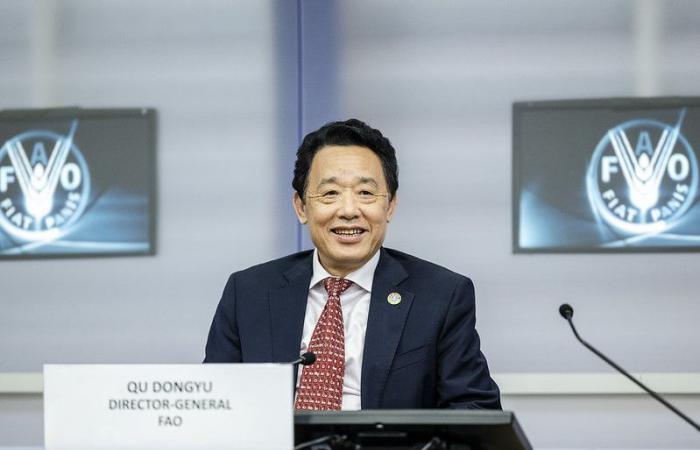This year’s theme, “The Right to Food for a Better Life and Future”, highlights, according to Mr. Qu, “the right of every person to adequate food”. He stressed the need to diversify diets, explaining that “agriculture today produces enough calories to feed the entire planet, but around 730 million people still suffer from hunger.” This situation is due to natural and human disasters, such as conflicts, climate change, inequality and economic recessions, he said.
2.8 billion people without access to healthy food
In addition to hunger, the Director-General of FAO highlighted another alarming reality: “More than 2.8 billion people cannot afford a healthy diet, one of the main causes of malnutrition in all its forms” . He added that almost a third of the world’s population does not absorb essential nutrients to thrive or, in some cases, survive.
Qu Dongyu also highlighted the importance of efficient and sustainable agri-food systems, integrating biodiversity and respecting traditional cultures while relying on science. According to him, “the right to food does not alone solve the problems of hunger, but it creates concrete obligations for governments and the actors concerned.”
FAO’s actions to strengthen food security
The FAO, according to Mr. Qu, is working on several fronts to realize this right, particularly in conflict zones where access to food is hampered. It is working to rebuild agricultural infrastructure and ensure the availability of food. Programs such as “Hand in Hand” or “One Country, One Priority Product” aim to guarantee food security in the medium and long term.
In regions where diets are unbalanced, exacerbated by globalization, FAO funds school feeding programs that source from local farmers, thus contributing to the fight against obesity and diseases linked to malnutrition.
Finally, Mr. Qu recalled the importance of sustainable agriculture, particularly in the face of climate challenges. FAO has already implemented climate-smart agriculture techniques in parts of Asia to help farmers adapt to changing weather.
A call for collective action
Qu Dongyu appealed to governments, the private sector, civil society and consumers, stressing that “collective action is needed to transform global agri-food systems.” He particularly insisted on the role of youth in this transformation and on the importance of reducing food waste.
“Science and innovation will be the drivers of this transformation,” he added, citing new technologies such as artificial intelligence and digital agriculture.
In conclusion, the FAO Director-General reaffirmed the organization’s commitment to achieving the 2030 Agenda for Sustainable Development, “leaving no one behind.”






